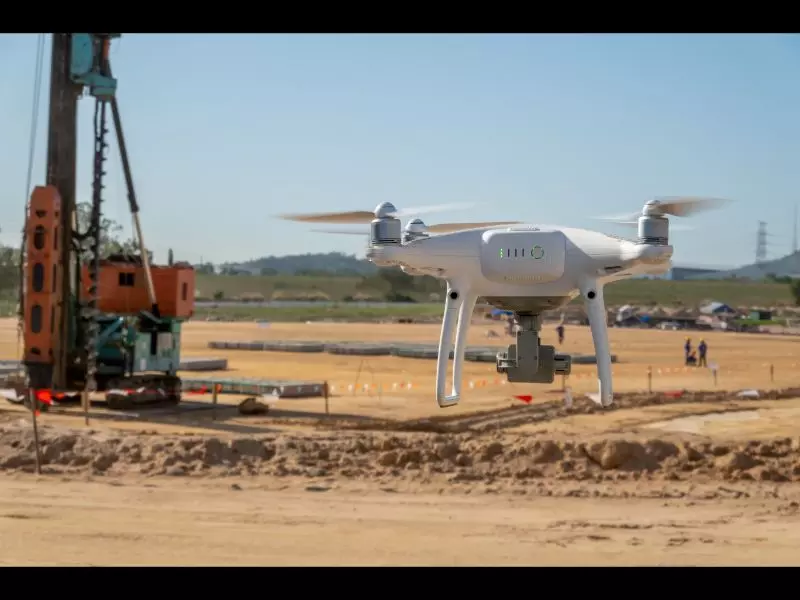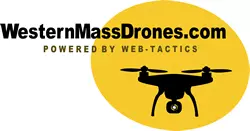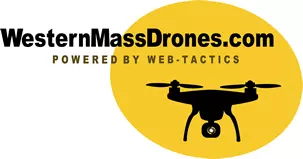Drone Visual Inspections 101
What is Visual Inspection and Why it Matters?

A visual inspection is a non-destructive examination of an object by looking at it. This may be carried out with the naked eye, or with assistance from tools or other aids. Visual inspections have been used for thousands of years to determine the quality and condition of objects.
On complex structures, where it's difficult to take physical samples, visual inspections are the only way to know what's going on. For example, to check for corrosion or fatigue in a bridge component that is too large to dismantle and take samples from, an inspector climbs around the structure and visually inspects it for signs of wear and tear.
A visual inspection can detect minute changes in material properties and physical structure.
NOT ALL DRONE INSPECTIONS ARE VISUAL
Drones are capable of performing a variety of inspections. While most drone inspections are visual, with the drone taking the place of the inspector's eyes, drones can be equipped with specialized sensors that allow them to conduct other sorts of inspections. In general, any type of sensor that may be installed on a UAV can be used for an inspection.
Drones are being outfitted with multispectral sensors in agriculture, for example, so that farmers may capture pictures of crops in a variety of spectral ranges. Some HVAC inspectors are employing a thermal camera on their drone to see where heat is escaping from a structure during an inspection.
Industries Where Drone Visual Inspections are Used
Remote structures, vehicles and structures in hazardous conditions are ideal candidates for drone inspections. For instance, visual inspections of oil rigs can be dangerous because of the height involved. Using drones to conduct visual inspection is much safer than sending people up for this purpose.
Drones have also been deployed to assess the extent of damage after natural disasters, like hurricanes. Visual inspections are also conducted on bridges. Lightning protection systems, wire ropes, and other factors come under visual inspection for wear and tear. After an earthquake or a flood, drone visual inspection can help determine if it's safe to drive or walk across a bridge that has been damaged by a natural disaster.
Types of Drone Visual Inspection:
Straight Down Visual Inspection (From Above)
This is the simplest and most common type of visual inspection. The drone flies straight down and takes a picture every few feet or every meter, depending on how high above the asset it's flying. There are plenty of software tools available to stitch these photos together, to turn them into a virtual 3D model.
Curved Path Visual Inspection (Alongside or Around an Object)
This type of visual inspection is particularly important for certain types of assets, like pipelines and very tall wind turbines. Flying alongside pipeline can be easy if it's straight. However, the curvature of a pipeline makes it very difficult to inspect the asset. These complex assets may be inspected over a long period or multiple days, by flying a drone along its length and taking photos every few feet.
The curved path visual inspection is also useful for large wind turbines because these structures are tall and occupy a lot of space around them. Flying straight down close to the turbine is not enough, as it can be difficult to see small problems with the blades if they're obscured by the massive towers. The curved path visual inspection method allows a drone to gain altitude and then fly around or above an asset like a wind turbine.
Multi-Directional Visual Inspection (Multiple Angles)
Now that you're familiar with the two most common types of visual inspections, let's look at the third - multi-directional. This is suitable for assets that are very long or wide, like oil pipelines that are hundreds of feet in length. These assets are usually located in remote areas that require a drone to fly several miles just to travel from one end to the other.
For example, when oil pipelines are inspected using a standard visual inspection method, it can take more than two days for an inspector to walk along its entire length and back again. To speed up this process, some companies use drones with multi-directional visual inspection capabilities. With this approach, the drone flies back and forth along the length of the pipeline. It lets off a small tethered robot that crawls inside the pipe and takes close-up photos, to capture details that can be missed by flying above.

